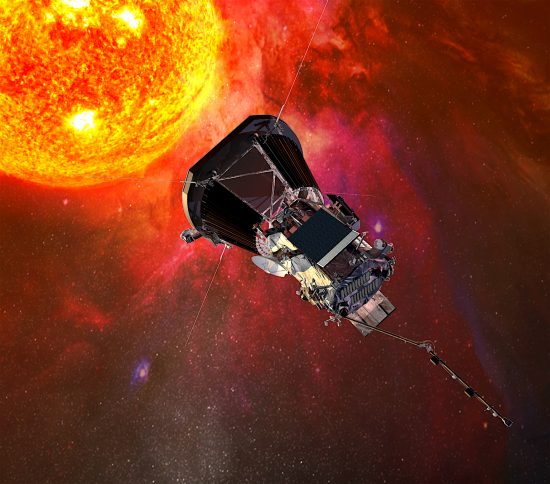Jan 16, 2018
A new mission to study the Sun from close up.
As Electronic Sun theory reveals, the Sun is powered externally by Birkeland current filaments that supply it with variable electric charge. Sunspots, flares, coronal heating, and coronal mass ejections are due to changes in the Sun’s galactic electrical supply.
Birkeland currents generate electromagnetic fields, so their shapes are known, since those fields can be mapped in space. Fluctuations in current forms double layers with enormous voltages between them, so forces in double layers can be several orders of magnitude greater than gravity. Double layers separate plasma into cells that can have different temperatures or densities.
According to a recent press release, sometime in 2018 NASA will launch Solar Probe Plus, a solar observatory that will fly into the Sun’s outer corona, much closer to the Sun than any other spacecraft. The mission will study how the corona is heated to such extreme temperatures. Despite many theories that attempt to describe coronal heating, it remains a challenge. Among other instruments, Solar Probe Plus will be equipped with a Faraday cup, a device to measure electric charge flow. It consists of an electrode connected to a resistor surrounded by a Faraday cage. Voltage drop across the resistor measures ion current.
Justin C. Kasper from the Smithsonian Astrophysical Observatory and University of Michigan Professor in Space Science wrote:
“Many of the systems we in the modern world rely on—our telecommunications, GPS, satellites and power grids—could be disrupted for an extended period of time if a large solar storm were to happen today. Solar Probe Plus will help us predict and manage the impact of space weather on society.”
Conventional thinking differs from Electric Universe proposals because most heliophysicists see the Sun as a giant amplifier, accelerating solar plasmas into space through “acoustical wave-guides”. However, kinetic heat transfer from the Sun’s core cannot be supported by observations. Rather, it is spicules, rising thousands of kilometers above the photosphere, that carry ionized plasma with them.
Loops and arches connect sunspots in the photosphere, penetrating the chromosphere. The chromosphere is a plasma sheath, or double layer region of the Sun, where most of its electrical energy is contained. When electric charge flowing into the Sun’s plasma sheath increases beyond a critical threshold it triggers sudden solar flares and prominence eruptions.
Powerful electric fields generate secondary toroidal electromagnetic fields that surround the eruptions. When current grows too strong, the plasma double layer is destroyed, interrupting the charge flow, and allowing stored electromagnetic energy to blast into space. Solar flares, therefore, can be thought of as solar lightning bursts, discharging vast quantities of matter at near relativistic speeds.
This underscores Electric Universe advocate Wal Thornhill’s assertions:
“Our Sun, like all stars, is a variable star. We must learn to live with the uncertainty of a star that is a product of its environment. We can expect our Sun to change when it enters regions of interstellar space where there is more or less dust, which alters the plasma characteristics. In the meantime, we can only look for reassurance by closely examining the behavior of nearby stars.”













